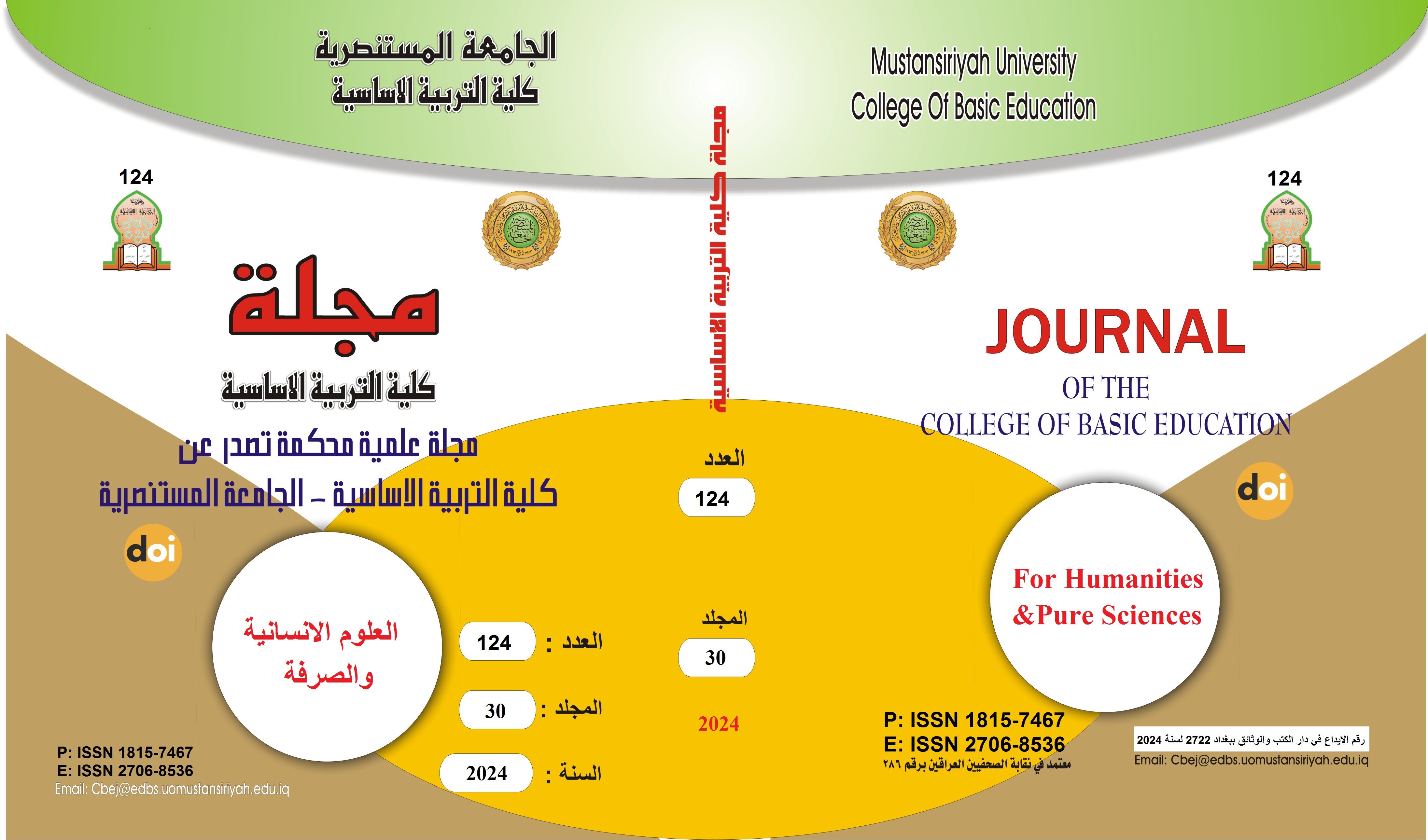Building a model based on self-regulated learning and measuring its impact on developing learning outcomes for students Of the Department of Art Education
Main Article Content
Abstract
The research problem is defined in: (building a model based on self-regulated learning and measuring its impact on developing learning outcomes among students of the Department of Art Education in the subject of design techniques), as the research aims to:
- Building a model based on self-regulated learning.
- Measuring the impact of the proposed model in developing the cognitive, skillful, and emotional learning outcomes among students of the Art Education Department.
- Identify the magnitude of the impact of the proposed model in developing learning outcomes for the design techniques subject among students of the Art Education Department.
The first objective will be achieved in the research procedures in the third chapter, and the second objective will be verified through the null hypotheses:
- There are no statistically significant differences at the level of (0.05) between the arithmetic means of the two experimental groups that studied (according to the proposed model of self-regulated learning) and the control group that studied (in the usual way) in the cognitive test for the post-test of design techniques.
- There are no statistically significant differences at the level of (0.05) between the arithmetic means of the two experimental groups that studied (according to the proposed model of self-regulated learning) and the control group that studied (in the usual way) in the post-test of skill performance of the candle making technique.
The research population consisted of students from the third stage of morning study, Department of Art Education / College of Basic Education / Al-Mustansiriya University, and their number reached (140) male and female students distributed among four halls. The student sample consisted of (64) male and female students. In the research procedures, the study was applied to a sample. The research, after carrying out several stages, including the stage of building a teaching model according to self-regulated learning based on the most important theoretical principles of self-regulated learning, was presented to experts and specialists to verify its validity and the goal for which it was developed. (3) educational units were designed on the topics of the design techniques subject ( Candle making technology, batik technology, logo design technology, and brand making technology), enhanced by data show technology to display artistic images and clarifications related to these topics. Also, a cognitive test and a skills test were built and presented to a group of experts to verify its suitability to measure the goal that was set to measure it, and to show the results of the research, the researcher used A set of statistical methods represented by the t-test, the difficulty coefficient, the discrimination coefficient, the effectiveness of false alternatives, the Keuder-Richardson equation 20, the Chi-Square equation for goodness of fit, the Pearson correlation coefficient equation in calculating the test reliability coefficient, and the eta-square equation to measure the size of the effect. The results showed the following:
- There is a statistically significant difference between the average scores of the experimental group students who study (according to the proposed model of self-regulation) and the average scores of the control group students who study the same subject in the usual way in the post-cognitive test.
- There are statistically significant differences between the average scores of the experimental group students who study (according to the proposed model of self-regulation) and the average scores of the control group students who study the same subject in the normal way in the post-skills test.
The conclusions include the use of mini-educational units to reduce the difficulties faced by the teacher, save time, reduce the effort expended, and give positive results, in addition to the research recommendations, including the application of the proposed model according to self-regulated learning in the relevant colleges and educational institutes for teaching and training learners in various academic specializations as an enrichment model that helped The learner must self-organize his learning and be accredited within the academic and vocational preparation programs. In continuation of the current research, the researcher proposes to conduct studies including: the effect of the teaching model according to self-regulated learning on the achievement of students of the Department of Art Education in the subject of handicrafts
Article Details

This work is licensed under a Creative Commons Attribution-ShareAlike 4.0 International License.
